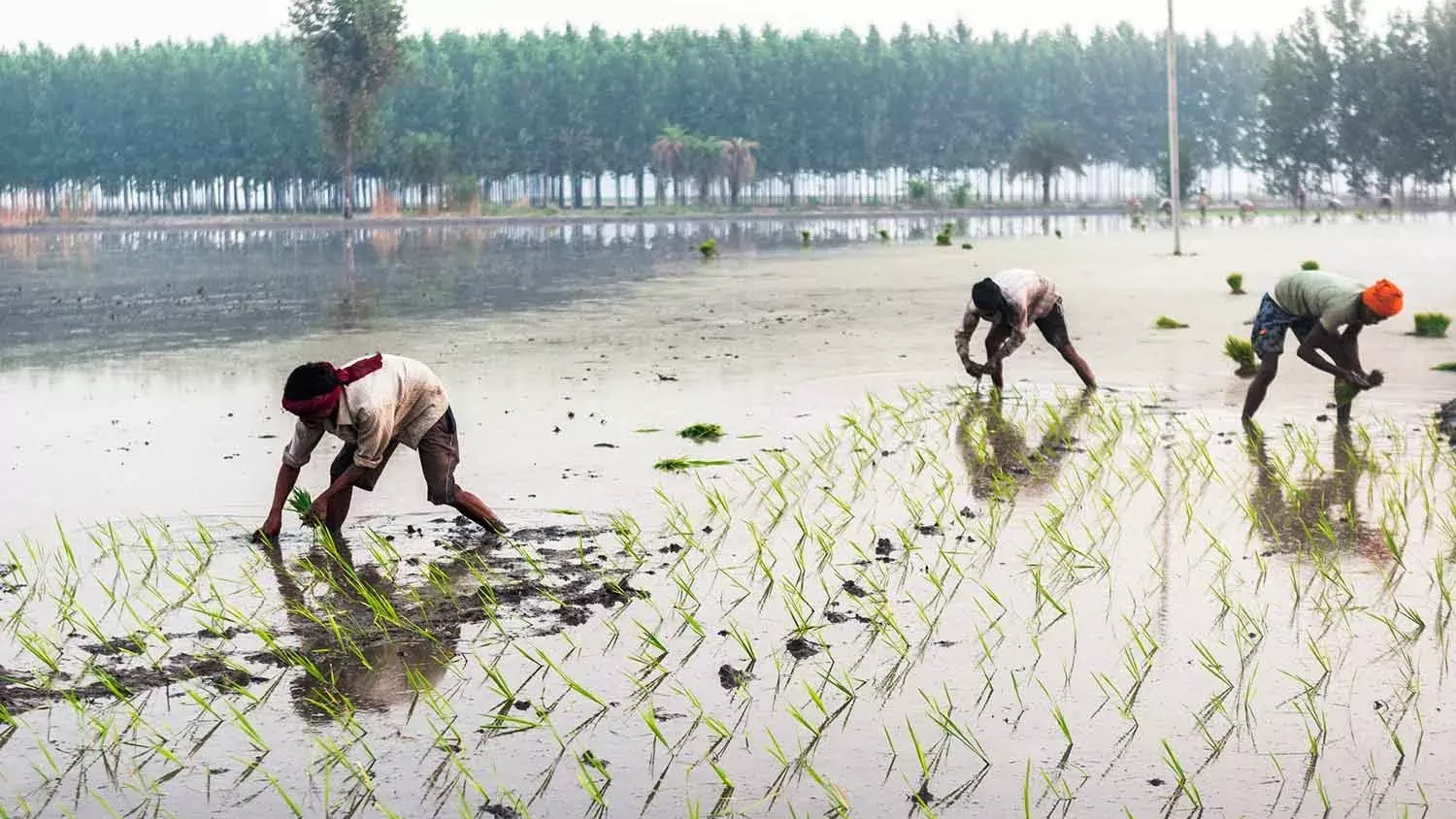

The green paddy fields in the rural Punjab looks as if it is flooded. It is not the case, because rice, especially the prized Basmati variety, is incredibly water-intensive. Farmers flood their fields to help the rice seedlings take root and keep the weeds at bay, only letting the fields dry out shortly before harvest. This constant need for water is at the heart of a growing crisis in Punjab, India, a region famous for its Basmati rice. We are gapping at the complex relationship between Punjab's Basmati boom, and its dwindling groundwater, and the urgent need for a sustainable solution.
Basmati rice, with its long, slender grains, distinct aroma, and fluffy texture, is a global culinary star. It's a point of pride for Punjab, a key agricultural region in India. India supplies a whopping 75% of the world's Basmati, with Punjab contributing nearly 40% of India's exports. And those exports have skyrocketed – increasing over 37 times in the last three decades, with nearly 70% going to just five West Asian countries: Iran, Saudi Arabia, Iraq, the UAE, and Yemen. While Basmati brings in significant revenue, its cultivation is draining the region's most precious resource: groundwater.
Punjab's farmers have been pumping groundwater at an alarming rate to keep up with the growing demand for Basmati. The numbers are stark: Punjab's Stage of Groundwater Extraction (SoE) is a staggering 163.76%. This means they're taking out 1.6 times more water than nature can replenish. At this rate, experts warn that Punjab could run out of drinking water in just 30 years – some even say it could be as little as 15 years.
The roots of this crisis go back to the Green Revolution of the 1960s and 70s. The government, aiming for food self-sufficiency, heavily incentivized rice and wheat cultivation. Punjab embraced this, becoming a major agricultural producer. As time passed the farming system became locked into a rice-wheat cycle – a monoculture that's now at the heart of the problem.
What compounded the issue?
The Punjab government has tried some interventions, like promoting direct seeding of rice and offering financial incentives. However, these efforts haven't been widely adopted, with farmers reporting minimal water savings. Switching to alternative crops like maize or pulses is also a challenge, as the entire agricultural infrastructure and market are geared towards rice and wheat. Farmers fear they simply won't earn as much if they switch.
Several potential solutions are being explored:
Basmati rice is a treasure, a symbol of Punjab's agricultural prowess. But its continued success cannot come at the cost of the region's water security. The solutions are there, but they require a collective effort. Farmers, policymakers, and communities must work together to implement sustainable practices, embrace innovation, and prioritize long-term water management. The challenge is to find a way for Basmati's legacy to thrive without leaving Punjab parched. It's time for a serious conversation about the future of farming in Punjab – a conversation that balances economic needs with ecological realities. What steps do you think are most crucial to address this crisis? Share your thoughts in the comments below.